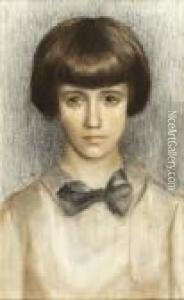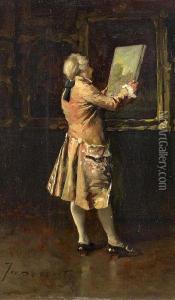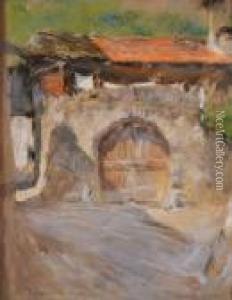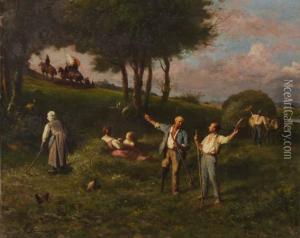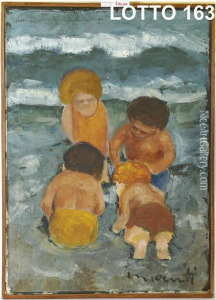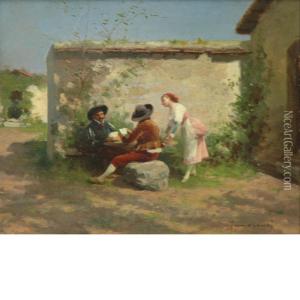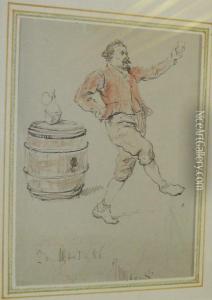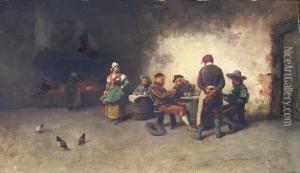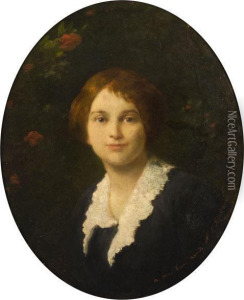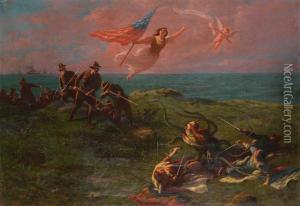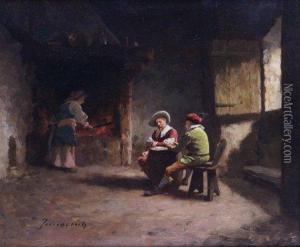Camillo Innocenti Paintings
Camillo Innocenti was an Italian painter, born in Rome in 1871, who played a significant role in the Italian and European art scenes during the late 19th and early 20th centuries. His work, deeply influenced by the Symbolist movement and later by Impressionism, reflects a unique blend of the traditional and the innovative, capturing the dynamic changes in art styles of his time.
Innocenti’s early career was marked by his study at the Accademia di Belle Arti in Rome, where he was initially drawn to the academic and historical subjects favored by the Roman art establishment. However, his artistic direction underwent a significant transformation after his exposure to the works of the Impressionists and Post-Impressionists during his travels in France. This experience led him to adopt a lighter palette, a looser brushwork, and a greater interest in capturing the fleeting effects of light and atmosphere, distinguishing his later work from the more rigid academic style of his early years.
Throughout his career, Innocenti was also heavily influenced by his fascination with the human figure and the psychological complexities of his subjects. His portraits and genre scenes are noted for their depth of emotion and subtle exploration of the inner lives of his subjects, often set against the backdrop of the vibrant and changing society of Italy during his lifetime.
In addition to his painting, Innocenti was also involved in decorative projects and teaching. He taught at the Accademia di Belle Arti in Rome, passing on his techniques and insights to a new generation of artists. His work in mural painting and his contributions to the decoration of public and private buildings are indicative of his versatility and his commitment to integrating art into everyday life.
Camillo Innocenti's legacy is that of an artist who bridged the gap between the traditional academic art of his youth and the more expressive and experimental movements that emerged during his lifetime. His death in Rome in 1961 marked the end of a career that had spanned nearly a century, during which he had witnessed and contributed to some of the most significant developments in modern art. Today, his work is celebrated for its technical skill, emotional depth, and its unique place in the transition of Italian art from the 19th to the 20th century.
